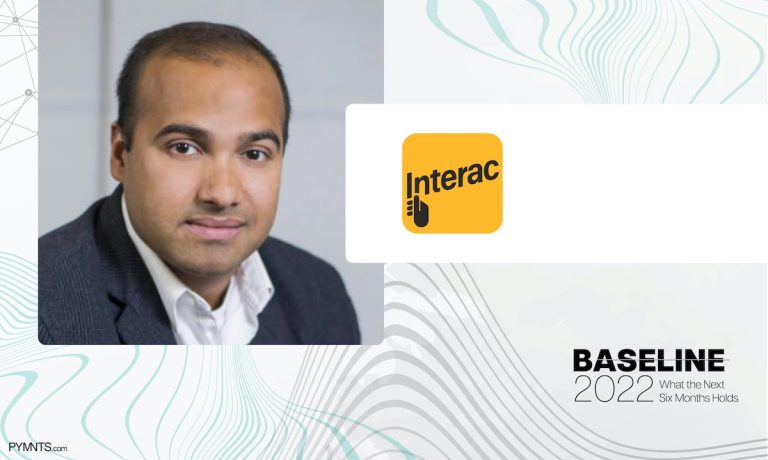
Anurag Kar, AVP, money movement, at Interac, writes in the PYMNTS eBook “Baseline 2022: What the Next Six Months Holds” that digital, real-time payments will continue to increase in usage and uptake as organizations find ways to incorporate them into the mix.
Canadians will continue to navigate increased living expenses over the next six months. We’re already witnessing consumers contend with competing needs: embracing the simple joys of shared experiences with family and friends, while staying in control of their own money.
Seamless digital payments based on real-time funds availability offers a way to get the best of both worlds, and I believe these types of transactions will continue to grow in importance across consumer and business segments over the next six months. The payments industry has been going through a modernization journey, globally, and this is no different in Canada.
From a consumer standpoint, many are using debit and peer to peer payments to stay in control of their finances. Throughout the pandemic, Interac Corp. saw massive growth with Interac e-Transfer® usage, across both individual and business users.
In April 2022, Interac reached a money movement milestone with Interac e-Transfer use surpassing more than one billion transactions over a 12-month period — a first in the 20-year existence of the service. This growth represents a transaction increase of 16% over the previous 12-month period.
It’s not a surprise, given the circumstances. Canadians want to get back to pre-pandemic life and make the most of their time, while also responsibly navigating new financial challenges.
As a real-time money movement service, Interac e-Transfer is a valuable tool for Canadians. It enables consumers to split costs with friends and family, helping them engage in more experiences and get more out of their budget using their own money. It also allows Canadians to digitally ask their peers for money using a request money feature. Young Canadians prefer to pay their share as soon as possible to avoid an awkward conversation later (73% of millennials) and believe that using the service is the simplest way to split the cost of experiences with others (69%).
Meanwhile, from a business perspective, it is quickly becoming standard practice to transact using digital payments, whether it be to receive customer payments or to pay contract employees or vendors quickly and seamlessly. In April 2022, 19% of all Interac e-Transfer transactions involved a business. This represents 33% of all dollars sent using the service that month. Businesses had to continue their digital transformation during the pandemic and have continued using the service as a tool to reduce and eliminate paper payments for clients who have traditionally been paid only by check.
Entrepreneurs also turned to Interac e-Transfer to accept payments from customers as part of the digital pivot that characterized the early stages of the pandemic. A recent Interac survey shows that almost half (47%) of Interac e-Transfer users have leveraged the service to pay a small business.
Seeing how businesses were making use of the platform for their business payment needs, we have been enhancing Interac e-Transfer to directly address challenges businesses face around data, speed, operational efficiencies, higher limits and the ability to process bulk transactions.
Looking forward to the remainder of 2022, we anticipate that digital, real-time payments will continue to increase in usage and uptake as organizations find ways to incorporate them into the payment mix.
After the intensity of the pandemic, Canadians of all generations, particularly younger ones, are creating meaningful experiences and embracing simplicities that help them get more out of life. And businesses are continuing to turn inward to embrace tools and services that help them maximize their cash flow and internal resources. The recent 1 billion Interac e-Transfer transaction milestone shows the growing relevance of seamless online, real-time payments in the digital economy and the growing trust of Canadians using Interac products to manage their financial needs.